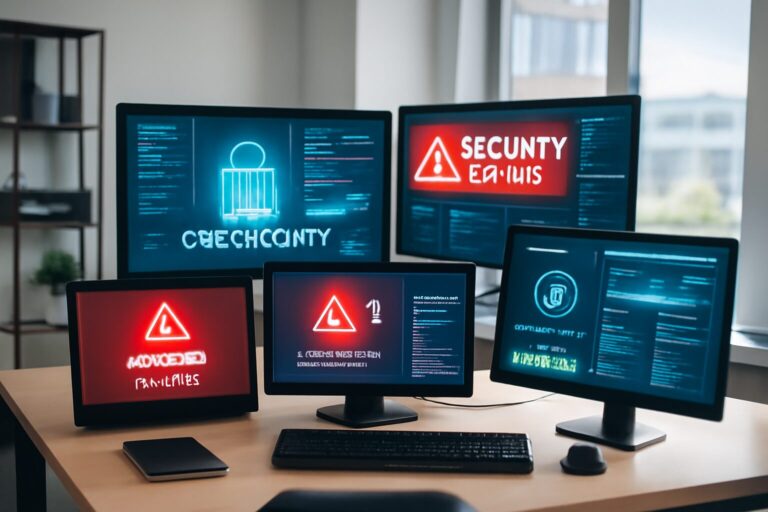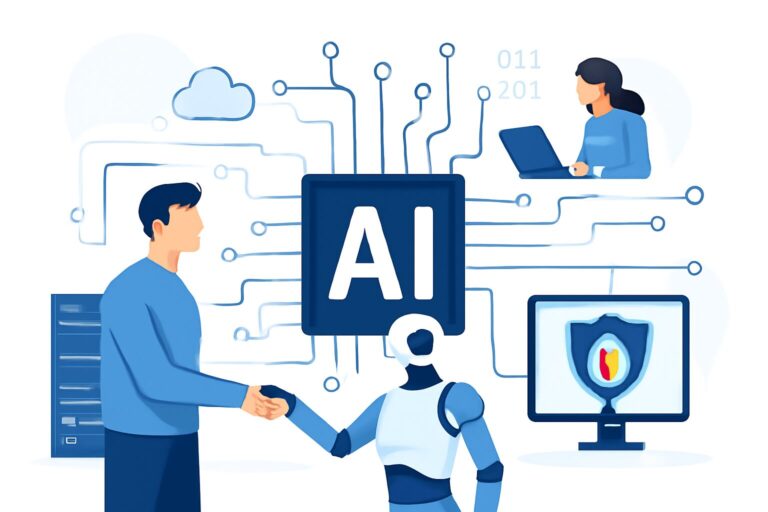# 7 Essential Strategies: Mastering IT Support User Issues to Boost Service Efficiency!
Dive deep into the ultimate guide for effective IT support. Learn technical support secrets using structured troubleshooting, empathetic communication, and systematic user training to easily resolve common IT challenges like network failures, remote desktop issues, hardware maintenance, and enhance customer satisfaction.
—
In today’s fast-paced digital era, IT support personnel face increasingly complex and diverse user problems. From small businesses to large enterprises, users frequently encounter issues like network lag, remote connection failures, or hardware breakdowns, severely impacting work efficiency. Confronted with these challenges, delivering fast and considerate technical support becomes the key challenge for every IT expert. This article unveils 7 proven weapons that not only quickly pinpoint problems but also build a golden reputation for user satisfaction! ✨
—
## Empathetic Communication Centered on IT Support User Issues to Build User Trust
IT support is not just a technical skill—it’s an art of human communication. Many IT personnel are highly skilled technically but poor communicators, causing users to respond negatively or even abandon seeking help. When handling IT support user issues, the most important first step is to empathetically understand users’ actual pain points and feel the frustration caused by technical failures.
– **Listening is the true beginning.** Patiently listening to user narratives can greatly alleviate their impatience simply by letting them feel understood.
– **Use simple, understandable language.** Avoid technical jargon overload and “translate” issues into terms users comprehend.
– **Put yourself in users’ shoes** to map real difficulties and precisely recommend solutions, crafting a seamless technical support experience.
Moreover, optimizing helpdesk processes is crucial. Establishing convenient incident reporting channels, clear escalation standards, and rapid responses ensures a smooth and efficient tech support journey, building user trust!
—
## Master the Secret Weapon of Structured Troubleshooting: Quickly Locate Network Faults and Performance Bottlenecks
Efficient troubleshooting is the core of solving IT support user issues. Disorganized diagnostic steps lead to wasted time and wrong conclusions. Adopting a systematic troubleshooting process significantly boosts problem location efficiency.
– **Develop standard procedures:** Gradually exclude issues from physical connections, IP configurations to routing strategies, ensuring every step is precise without omissions.
– **Utilize network monitoring tools:** Tools like Wireshark and PRTG catch data flows in real time, helping to find abnormal latency or packet loss reasons.
– **Remote desktop support:** Directly access troubled terminals remotely without onsite hardware, resolving issues comprehensively. Instant communication accelerates user assistance and improves effectiveness.
Clear troubleshooting manuals and related automation scripts are vital for IT teams to speed fault resolution and maintain growing team efficiency!
—
## Clever Tool Integration to Build an Efficient Software and Hardware Maintenance System
Facing countless IT support user issues, relying on a single tool is like fighting alone. Forming a scientific and reasonable combination of tools is key to enhancing software and hardware maintenance efficiency.
– **Proactive hardware monitoring:** Using dedicated intelligent monitoring programs for Hewlett Packard Enterprise (HPE) and Dell EMC devices can preemptively identify hardware faults, preventing unexpected crashes.
– **Automated script management:** Flexible use of scripting tools like PowerShell and Ansible greatly simplifies patch installation and system upgrades, reducing human errors.
– **Patch management platforms:** Unified scheduling of patch releases ensures all endpoints update synchronously, improving system security.
Proper application of these tools transforms IT support from passive emergency response to proactive maintenance, avoiding recurring problems.
—
## Address Repetitive Tickets at Their Root Through Systematic User Training
Many IT support user issues stem from improper user operations. Building a systematic training mechanism and comprehensive knowledge base is a powerful method to reduce repeated communication and tickets.
– **Detailed training documentation:** Combining illustrated teaching materials helps users master basic network setup, software usage, and simple troubleshooting.
– **Multi-level training design:** Design beginner and intermediate courses for users with varying technical skills to meet diverse needs.
– **Knowledge base platform:** Publish FAQs, common problem solutions, and video tutorials to establish an around-the-clock self-service ecosystem.
For example, Microsoft’s self-service portal experience shows that a complete knowledge base significantly improves user self-resolution rates and relieves technical team pressure.
—
## Continuous Optimization and User Feedback to Build Lean IT Support Operations
Every advancement in technical support depends on continuous optimization driven by user feedback. Deploying scientific data collection and analysis mechanisms to capture user satisfaction and problem trends promptly is the shortcut to improved service quality.
– **User satisfaction surveys:** Collect genuine feelings through regular electronic questionnaires and service evaluations.
– **Problem data analysis:** Statistics on repeat tickets, average handling times reveal potential bottlenecks.
– **Intelligent feedback systems:** AI-based technologies predict users’ potential issues to intervene early.
Many leading companies like Amazon Web Services (AWS) incorporate data-driven decision-making into IT support operations, successfully achieving efficient customer management and satisfaction assurance.
—
## IT Support User Issues: Core FAQ
– How to quickly determine the reason for network failure?
Check physical connections and IP configurations first, use ping commands to detect network responses, then use monitoring tools to analyze traffic anomalies.
– What to do when remote desktop connection fails?
Verify target host firewall and remote service settings, confirm account permissions, and ensure network stability.
– What is patch management and why is it important?
Patch management means regularly installing software updates and vulnerability fixes to ensure system security and stable operation.
– How to reduce repetitive user reports?
Enhance user training, provide easy-to-understand manuals, and promote self-service platforms.
– How can IT support personnel improve communication skills?
Listen more, explain with simple language, respond empathetically to build trust.
– What tools can improve IT support efficiency?
Remote desktop software (TeamViewer), intelligent monitoring platforms (Nagios), and automation scripts (PowerShell) are valuable.
—
## Conclusion: Solve Every IT Support User Issue Professionally for a Leap in Service Quality!
Faced with complex IT support user issues, solo efforts are insufficient. Using empathetic communication, structured troubleshooting, smart tools, and systematic training, combined with data-driven continuous optimization, truly enhances speed and quality of service!
If you need professional team assistance, **welcome to visit [DE-LINE](https://www.de-line.net)**. We provide comprehensive IT support solutions to help you master all user challenges effortlessly and experience worry-free, efficient technical support services now! 🚀
—
**References:**
– Microsoft Knowledge Base – https://docs.microsoft.com
– Hewlett Packard Enterprise Support – https://support.hpe.com
– AWS Customer Service Insights – https://aws.amazon.com
—
Seize these 7 secrets, sail in the blue ocean of IT support, and become your clients’ most trusted technical guardian! 🌟
************
The above content is provided by our AI automation poster


